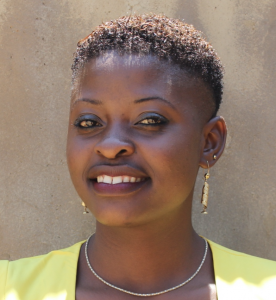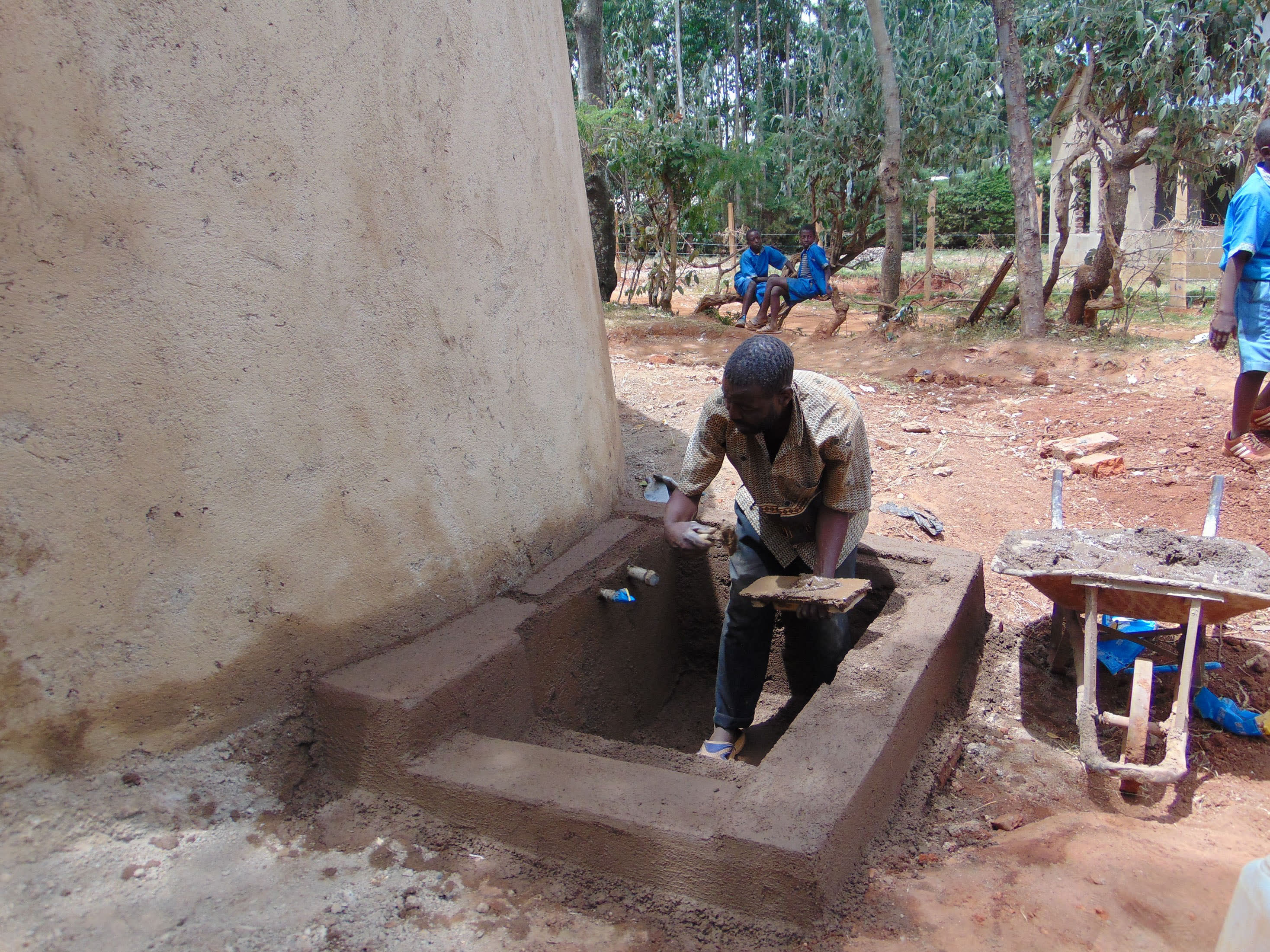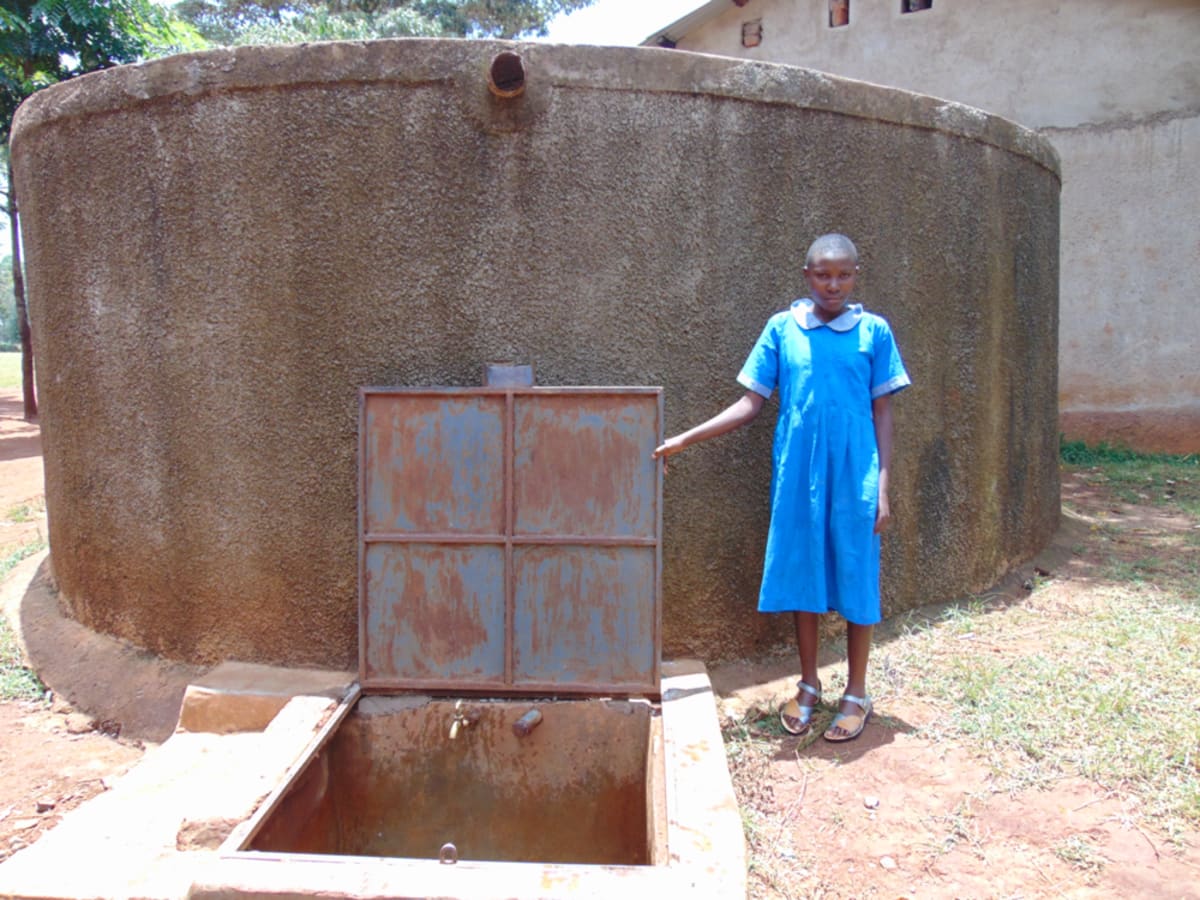It was a cool and wet afternoon when we left our office for Vihiga County. When we arrived at Kegoye Primary School, many of the pupils had gone for lunch while others were eating in their classrooms. Some had already finished eating and were playing outside.
The school is in a rural setting away from the busy market. The surroundings are peaceful, providing a comfortable environment for the learners. About 20 meters away are some small shops that serve as a canteen where students can go buy a few items they need.
The school has 12 classrooms that are split in half to host two classes. There is a small library that also serves as a staffroom. The school also has a special unit which teaches 11 pupils. These children are taught different technical courses such as hairdressing, tailoring, and knitting. There is a well-kept kitchen that’s used to prepare food for teachers and some pupils.
A normal day starts as early as 6am when students prepare for their walk to school. On arrival, various chores are done, including cleaning the compound and fetching water from the spring. The teachers arrive at school around 8am to start regular lessons.
Students have to go to the spring because there is only a little bit of water at school. A plastic water tank stores rainwater and provides 3,000 liters when entirely full. Since there are 500 students and over one dozen staff members here, this amount only lasts for two days until more rain is needed. This forces students to leave school and go out to the community’s spring at least one or two times a day.
The spring is about 700 meters away from the school along a path that scares the young students; it is steep and slippery. They carry their heavy containers back to the school and return to class feeling tired. Teachers note many absences because of typhoid.
"We have been having issues with insufficient water for a long period now. As a teacher, when it’s your duty you find it hard to follow pupils every morning to the spring. They come back very wet and not even able to concentrate in class," said Mrs. Violet Kavoga.
What we can do:
Training
Training on good hygiene habits will be held for two days. The facilitator will use PHAST (participatory hygiene and sanitation transformation), ABCD (asset-based community development), CTC (child to child), lectures, group discussions, and handouts to teach health topics and ways to promote good practices within the school. The CTC method will prepare students to lead other students into healthy habits, as well as kickstart a CTC club for the school.
Handwashing Stations
This CTC club will oversee the new facilities, such as handwashing stations, and make sure they are kept clean and in working condition. The two handwashing stations will be delivered to the school, and the club will fill them with water on a daily basis and make sure there is always a cleaning agent such as soap or ash.
VIP Latrines
The latrines are very dirty because there isn’t enough water to clean them. Some have broken doors and most floors have cracks that could allow a collapse.
Two triple-door latrines will be constructed with local materials that the school will help gather. Three doors will serve the girls while the other three serve the boys. And with a new source of water on school grounds, students and staff should have enough to keep these new latrines clean.
Rainwater Catchment Tank
A 50,000-liter rainwater catchment tank will help alleviate the water crisis at this school. The school will also help gather the needed materials such as sand, rocks, and water from the spring for mixing cement. Once finished, this tank can begin catching rainfall that will be used by the school’s students and staff.
We and the school strongly believe that with this assistance, standards will significantly improve. These higher standards will translate to better academic performance!

 Rainwater Catchment
Rainwater Catchment
 Rehabilitation Project
Rehabilitation Project




































